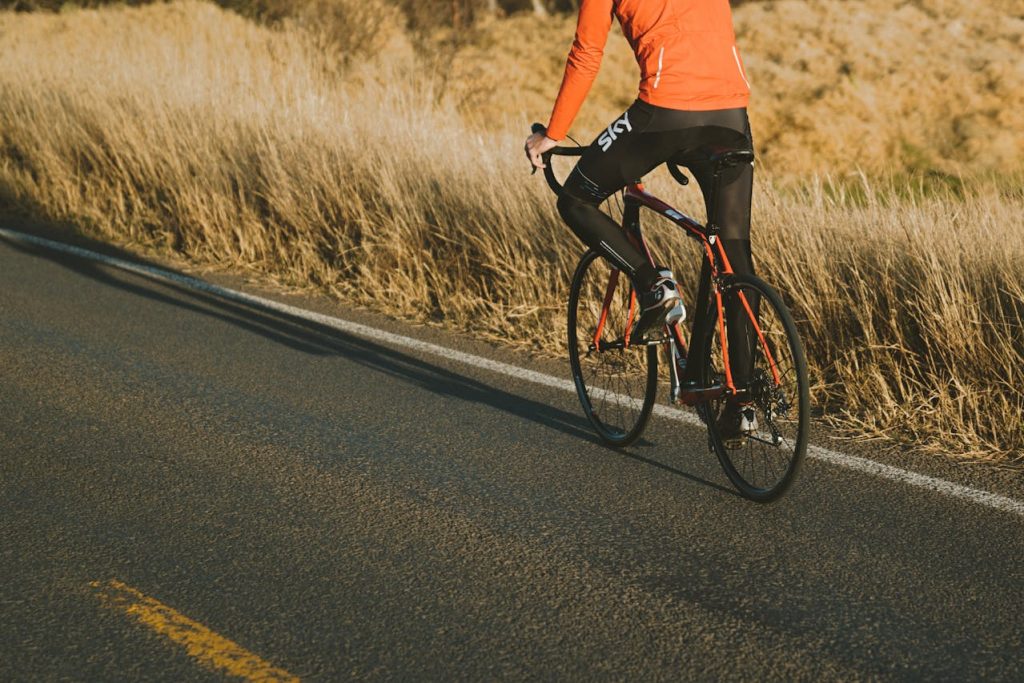All U.S. roads are built for vehicle traffic, whether high-speed or residential. Unfortunately, this vehicle-focused infrastructure makes the roads even more dangerous for cyclists.
Cyclists must share the road with cars and trucks in areas without dedicated bike lanes or paths. This immediately increases the risk of accidents.
Moreover, several states do not have cyclist helmet laws, which increases the risk of serious injury or death in an accident.
Considering that there are thousands of hit-and-run accidents in the U.S. every year, this is yet another hazard cyclists face daily. NHTSA (National Highway Traffic Safety Administration) data for 2021 shows that pedestrians and bicyclists experienced the highest traffic deaths in four decades.
The data also shows that cyclists account for 2% of traffic deaths and 8% of hit-and-run traffic deaths.
If a driver hits a cyclist and speeds off, the accident is called a hit-and-run. Hit-and-run drivers are liable for damages, even if they do not stop after causing an accident.
But can cyclists recover damages after a hit-and-run, especially if the driver is missing in action?
The answer is a tentative yes, but it depends on several factors.

Hit-and-Run Accidents Pose a Challenge for Cyclist Victims
If you are a cyclist and you are struck by a driver who proceeds to speed away, your main challenge will be to identify said driver. If you cannot identify the driver, you will find filing a personal injury claim difficult.
When an accident happens between two or more cars, getting driver information and witnesses is often easier. As a cyclist, you probably seek out less congested roads or bike lanes. If an accident happens here, there are automatically fewer witnesses from whom you can get statements.
So, without witness testimony and driver identity, you have very little to go on to file a claim.
Even worse, you may suffer severe injuries that require immediate medical treatment. While you recover, you may not be able to work. This means your medical bills will increase while your income decreases or halts completely. Before you know it, you will have a massive financial burden to overcome.
Avenues to Explore After a Hit-and-Run
You have some options, even if you cannot immediately file a personal injury claim. For instance, if the driver vanishes after the accident, you must use your health insurance to cover your initial medical bills. This will help relieve some of the financial stress while you explore other ways to claim compensation.
Filing a claim with your insurance provider may motivate the company to help find the hit-and-run driver. This is mainly because most insurance companies want to avoid paying claims if another party is liable for them.
However, if the driver is located eventually, you can only claim if they have insurance, and adequate insurance at that. This means you can claim uninsured/underinsured motorist coverage if this is mandatory in your state.
If you have home or renters insurance, this may cover the damage or replacement of your bicycle.
Alternatively, if the driver is still missing or lacks sufficient insurance funds for your claim, you may be able to file a claim with your state’s hit-and-run fund. Only some states have a fund like this, so you would have to research the availability of such a fund in your state.
What to Do After a Hit-and-Run Accident
If things work out to the extent that the driver is identified and they have enough insurance, you can file a personal injury lawsuit against them to recover damages.
Before doing this, you must prove that the driver was negligent and that their negligence directly caused your injuries.
This is not an easy connection to make, even if you are the victim. It is better to hire a lawyer when you get to this point so they can help you make your case.
Take Immediate Action
If you are involved in a hit-and-run, you must get medical attention immediately. Even if you feel like you were not seriously injured, you need a doctor or hospital to give you a thorough medical report. This report will form a major part of your personal injury claim.
Report the accident and file a police report. Give the police any information you can remember about the incident, the car, and the driver. This information will go into the official police report and can help establish fault and find the hit-and-run driver.
There is little chance you would have time to take photos or write the license plate of a car speeding away from you. When you feel less shaken after the accident, try to find cameras in the area that may have caught the incident. If there are bystanders, ask them if they saw what happened.
Finally, inform your insurance company about the incident and give them only the facts.
This is all the information that your lawyer will use to help you build a strong personal injury case when the driver is found.
Why Do Drivers Flee?
Most of the time, drivers flee the scene of an accident because they fear the unavoidable legal consequences of their actions.
They may be under the influence of alcohol or drugs and flee to avoid a DUI charge. Some drivers do not have a valid license or mandatory insurance, so they will drive off, hoping to avoid a charge of illegal driving.
Sometimes, a hit-and-run driver has outstanding warrants, and they believe their only way to avoid arrest is to flee.
Accidents that involve cyclists also shock the drivers, causing them to panic and make bad decisions. They may drive off, hoping the incident will never catch up to them.
Moving On After a Hit-and-Run Accident
You can do all the right things while cycling on a U.S. road, including wearing brightly colored clothing, following all the traffic laws, cycling without distractions, and still get into an accident.
That is the unfortunate truth of cycling in America. But, if you take immediate action and get legal help, you can work through this terrifying situation and eventually move on. With your lawyer’s assistance, you can hold the negligent driver accountable while fighting for the compensation you deserve.



